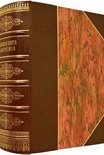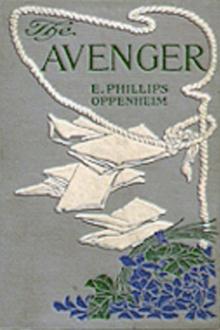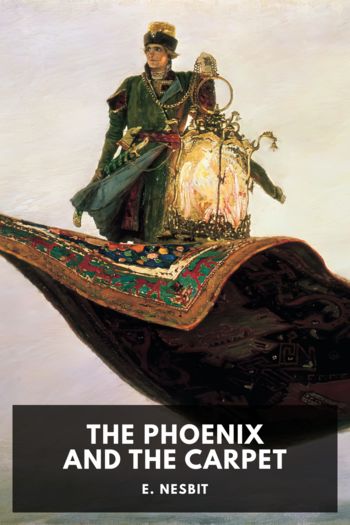Hitler's Terror Weapons, Brooks, Geoffrey [cat reading book .txt] 📗

Book online «Hitler's Terror Weapons, Brooks, Geoffrey [cat reading book .txt] 📗». Author Brooks, Geoffrey
Professor Goudsmit Not Deceived
The only military scientist on record as believing that Heisenberg had been involved in an attempt to build a German atom bomb is Professor Samuel Goudsmit. In his book Alsos- The Failure in German Science (Sigma, London, 1947) on page 183 Professor Goudsmit reproduced two sketches contained in Heisenberg’s official German wartime report respecting the B-III uranium/paraffin experiment. Under a drawing of the chimneyed sphere appeared the caption “Germany’s Atom Bomb” and the words “Germany’s experimental uranium pile which they believed would make a bomb”. Beside a slightly adulterated version of the cut-through diagram he wrote, “Diagram for the experimental ‘bomb’ which consisted of layers of uranium and paraffin”. Professor Goudsmit was Jewish and had lost both parents at Auschwitz. His book was a non-scientific publication very popular at the time and it is possible that he was merely attempting to ridicule Heisenberg’s scientific circle. But one can interpret it in another sense. Perhaps this was as far as Goudsmit, who was restrained by the various US secrecy laws, was permitted to go in print with his allegation. Joke or not, this device would have worked as the warhead of a V-2 rocket.
After five or six months in the sub-reactor sphere, the uranium powder was enriched with plutonium. In the bomb casing the material would be stacked in alternate layers with paraffin. The paraffin in the top hemisphere layers prevent premature fission by the highly radioactive Pu240 plutonium isotopes which would otherwise spoil the reaction when the bomb is detonated. The bottom hemisphere would be filled with iron ballast. The weight of bomb core, casing and ballast material acting as an anvil would have been limited to one tonne, the payload of a V-2, the speed of the rocket at impact rendering superfluous the four or so tonnes of HE necessary to set off the device in normal circumstances. Impact was at Mach 3.5. Because detonation would not be uniform around the bomb sphere, this method would have resulted in a ‘fizzle’ equivalent to several dozen tonnes of TNT, an earthquake effect and meltdown with radioactive fallout.
It was a brilliant concept, cheap to manufacture anywhere and not difficult to produce in numbers. The failure of the Leipzig experiment after only three weeks signalled the end of Professor Heisenberg’s participation in the project and in midsummer 1942 the project was transferred elsewhere.
CHAPTER 6
The German Post
Office Takes Over
“I, of all people, did in fact lead the way for the great advance in atomic development in the German Reich.”
Wilhelm Ohnesorge, Postmaster General, 1937-1945 Quoted from his obituary, Soldatenzeitung, East Berlin, 10 March 1962.
A LBERT SPEER69 recalled that, although Hitler did speak to him occasionally of the possibilities of the atom bomb, the strategic benefits of having it eluded the Führer. The subject was a source of irritation to Speer, for he knew that there was in existence some sort of secret arrangement involving the Post Office about which he was being left completely in the dark, and this appeared to be a matter on which, as Armaments Minister, he really ought to have been consulted.
Explaining that there were 2200 recorded points of reference in his conferences with Hitler, and that there was only a single occasion when the subject of nuclear research appeared on the agenda, being passed over “with laconic brevity”, Speer noted Hitler’s strengthening resolve not to pursue the matter.
Hitler’s objection to the atom bomb was fundamental. He had read somewhere (almost certainly the article by Professor Jean Thibaud of the Sorbonne published on 12 March 1941) that a nuclear explosion might proceed to ignite all the hydrogen atoms in the atmosphere, transforming the world into a glowing star. German physicists could not guarantee that the theory was definitely wrong: even at Los Alamos in July 1945 the Italian-American physicist Fermi wondered aloud whether the test bomb he was about to ignite might trigger the heavens, destroying every living thing on earth. Speer thus concluded:
“Even if Hitler had not been against nuclear research on doctrinal grounds [i.e. Aryan Physics]: even if the stage we had reached in investigating the principles in June 1942 had provided the atomic physicists with an objective for the investment of thousands of millions of marks towards producing the atom bomb, it would have been impossible for our strained war economy to have brought together the technicians, materials and priorities for the project.” 70
It is an odd thing that Hitler should have appeared to shun atomic physics when speaking to Speer whilst openly affirming his enthusiasm for its future prospects to his closer companions at table. Martin Bormann’s stenographer Henry Picker recorded71 that Hitler considered the splitting of the atom to be the most important of all scientific achievements for Germany’s future to the extent that it was the Führer himself who was inspirational in having the short documentary film Gold starring Hans Albers exhibited repeatedly in cinemas in order to popularize the subject of nuclear science. Anything short of a chain reaction was Aryan Physics.
Albert Speer wrote disapprovingly72 about the unaccountable optimism in Hitler’s demeanour whenever the subject of nuclear energy came under discussion in the early summer of 1942, and the Führer’s disposition appeared to Speer to have the closest possible connection with a clique consisting of the Postmaster-General, Ohnesorge, Goebbels and Hitler’s personal photographer, Heinrich Hoffmann, who were all apparently party to some big secret.
Speer concluded that, since Hitler spurned responsible sources of information and preferred to rely instead on having knowledge peddled to him by these amateurs, it all went to prove not only Hitler’s partiality for dabbling, but also how little he understood of the scientific principles involved.
Hitler’s Reichspost handled all telecommunications as well as the mails and had a large budget for research. Part of this was allocated to an atomic development programme for which the Postmaster-General, Wilhelm Ohnesorge, had a





Comments (0)